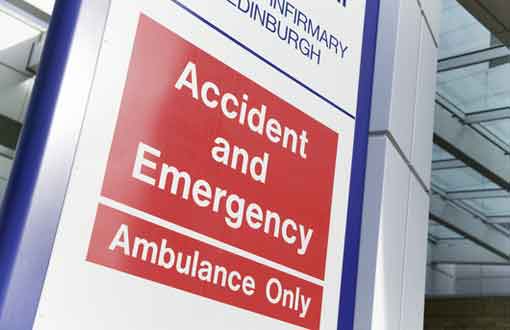You are working in an emergency department. You see an 85-year-old man who has fallen at home. He is confused but not in any pain. He has a mild fever, crackles at his left lung base, and slight suprapubic tenderness. He has a history of hypertension, type 2 diabetes, and congestive cardiac failure. He says he is on a number of medications, but is not sure of their names. His daughter is coming to talk to you and she should be in the department in about 30 minutes. You think that you will learn a lot from her and also from your senior—when you discuss this man’s problems with them.
But there is another problem. You are under pressure to refer the patient to the medical team as soon as possible as he is about to breach the hospital waiting time. What should you do? How will you balance the need to provide patient-centred care and to learn from your senior and to keep within the target waiting time?
Webster and colleagues have published an interesting paper on this topic. They haven’t found any easy answers, but they do come up with some critical insights. They looked at interactions between emergency department doctors and general internal medics at a teaching hospital in Canada. They found that there was a perception that efficiency was sometimes seen as more important than education and, more worryingly, that some patients were seen as a barrier to efficiency. In some situations, the goal of getting the patient out of the emergency department was perceived as being more important than all other goals. The patients who were seen as a barrier to efficiency were generally elderly patients with lots of problems who needed extra time so that these problems could be sorted out.
The difficulty with all of this is that our population is rapidly growing older and so there will be many more older patients with multiple problems in the future. But there are opportunities here also. Many of the diseases that older people have are amenable to treatment. Also trainee doctors can learn a great deal from older people and their illnesses. Trainees could learn a great deal from the man described in the clinical scenario above. I suspect that he has a pneumonia or a urinary tract infection—but the differential diagnosis is vast. When I put the symptom of falls into our own clinical decision support tool BMJ Best Practice, I see that he has a differential diagnosis of visual impairment, peripheral sensory neuropathy, cerebrovascular accident, transient ischaemic attack, joint buckling or instability, deconditioning, medicine effects or polypharmacy, environmental or home hazards, vestibular dysfunction, gait disorders, dementia, delirium, depression, seizure, subdural haematoma, syncope, orthostatic hypotension, substance abuse, and carotid sinus sensitivity. All are treatable and all are opportunities to learn. But junior doctors need time for this. They need time to learn and to provide the care that patients need. They also need time to seek and receive support in making decisions. This might mean face to face support from senior physicians or online support from clinical decision support resources. In this regard the speed of online clinical decision support is paramount—especially in pressured environments such as the emergency department. If you can get an answer from clinical decision support within seconds, then this means a few more minutes to spend with the patient.
But a bigger problem is a culture where some patients might be seen as a barrier to efficiency. To fix this, there will need to be a fundamental rethink of both education and care.
Kieran Walsh is clinical director of BMJ Learning and BMJ Best Practice. He is responsible for the editorial quality of both products. He has worked in the past as a hospital doctor—specialising in care of the elderly medicine and neurology.
Competing interests: Kieran Walsh works for BMJ which produces resources in clinical decision support and medical education.
